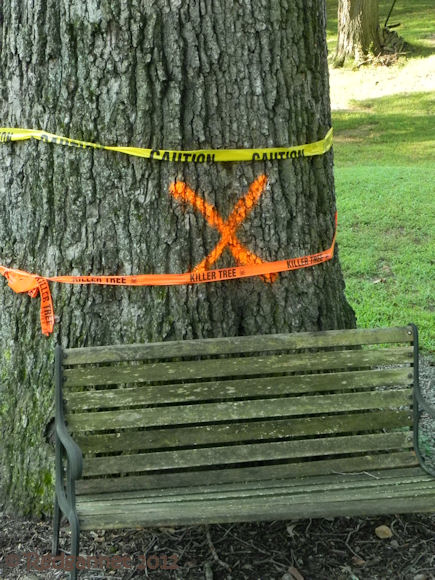This post carries a big thank you to Mat Gilfedder. His
eBird submissions caught my eye and prompted an enquiry about Oxley Creek Common. Mat replied with an
extensive site report that completely sold me on the idea of a visit.
As promised, the early arrival was rewarded with a view of
the White-bellied Sea-eagle returning
home with its catch, mobbed in its flight by Torresian Crows.
The Red Barn at Google Earth ref; 27°32'8.61"S 152°59'33.56"E
is an obvious feature to assure first-time visitors that that they are in the
right place. Referred to as Area 1 in Mat’s guide the grassy approach and mound
brought my first lifer of the day in the shape of an Australian Pipit. This was a bird
that I had known in its previous incarnation as Richard’s Pipit, but taxanomic
adances and a change of governing body, brought a fanfare from my listing
software (does eBird give you fanfares? I think not!).
Two visits have been heated, folded and beaten back into
shape as a single post. The pipit was seen on the first exploratory sneak peak,
but I had use of a car on that occasion and had to return by public transport
to qualify the sightings for my 10,000 Birds Year List. The pipit was seen by
the barn during the first visit, but missed until much later in the day on the
qualifying trip.
The trees around the barn brought the first Brown Honeyeater of the day as well as Blue-faced Honeyeaters and assorted
Australian “black and whites”.
The path leads through a gate and into Area 2 which is
characterised by the tree line bordering the cattle meadows on the left, with
the tidal creek to the right. Lewin’s
Honeyeaters, Silver-eyes, and Black-faced Cuckoo-shrikes were seen in
the trees while the meadows produced Tawny
Grassbird, Chestnut-breasted
Mannikin and Golden-headed
Cisticolas.
Brown
Quail crept along the fence line separating the two habitats.
The bird that I had really hoped to see here was found at
the first dip. An unmistakeable male Red-backed Fairywren was
accompanied by a much duller female in the short grass by the dried stream.
Without the male, I would have had to refer to the field guide to separate the
female from the also present and similar Variegated
and Superb Fairywrens.
As I continued on, the strident call of the
Brown Honeyeater could be heard almost constantly. More tuneful were the Golden
and Rufous Whistlers.
A path leads off to the left toward Jabiru Swamp. Willie Wagtails flitted up and down
from the fence posts and Cattle Egrets
diligently followed the large bullocks through the long grass of the meadows. A
pair of Australian Kites roosted in the shade in a large gum to the left of the
track and a White-faced Heron
flushed from the seepage from the larger pond to the right. Three Black-fronted Dotterels flew in and it
seemed that two preferred to be together and kept chasing the third one away. They moved towards me. feeding as they went. They reached forward with their legs and wriggled their toes in the mud in the manner of an egret probing for food and approached to within 5 meters. I have never been close enough to see the chestnut wing patch before.
Black-winged Stilts, Australian Grebe and Pacific Black Ducks were seen on the pond
with a single male Chestnut Teal on
the far bank.
Further along was Pelican Lagoon with one Australian Pelican roosting on the
island as if to prove that names are not just pulled out of a hat. Dusky Moorhen, Australian Grebes and Welcome
Swallows were plentiful on the lake, with White-eyed Duck, Black Swan
and Fairy Martins at a closer look.
I returned to the path by the creek and continued towards “The
Neck and the “Secret Forest”. More Quail flushed from the fence line and a Pheasant Coucal flew off in a panic
when I surprised it by appearing suddenly on the skyline as it explored a damp gully.
Some charming Double-barred Finches
were seen just before I reached the furthest point and turned to head back.
On the return walk I was pleased to find the Grey Shrike-thrush that I had seen on
the first visit, but almost missed on the second. It was accompanied by a Spangled Drongo, but neither would sit
for a picture.
Bird seen; 64
Black Swan 4, Maned Duck 2, Pacific Black Duck 15, Grey Teal
8, Chestnut Teal 1, White-eyed Duck 1, Australian Brush-turkey 8, Brown Quail
8, Australian Grebe 20, Little Black Cormorant 5, Little Pied Cormorant 4,
Australian Darter 1, Australian Pelican 1, Great Egret 1, Intermediate Egret 1,
White-faced Heron 2, Australian Ibis 20, Straw-necked Ibis 1, Australian Kite
2, White-bellied Sea-Eagle 1, Brown Goshawk 2, Australian Kestrel 1, Dusky
Moorhen 30, Eurasian Coot 4, Masked Lapwing 2, Black-fronted Dotterel 3, Pied
Stilt 12, Caspian Tern 1, Crested Pigeon 8, Bar-shouldered Dove 6, Galah 8,
Rainbow Lorikeet 4, Pheasant Coucal 1, Red-backed Fairywren 9, Superb Fairywren
3, Variegated Fairywren 6, Lewin’s Honeyeater 10, Noisy Miner 4, Brown
Honeyeater 30, Blue-faced Honeyeater 3, Eastern Whipbird 2, Grey Butcherbird 6,
Pied Butcherbird 12, Australian Magpie 6, Pied Currawong 1, Black-faced
Cuckoo-shrike 8, Golden Whistler 2, Rufous Whistler 4, Grey Shrike-thrush 2,
Australian Figbird 1, Spangled Drongo 1, Willie Wagtail 30, Grey Fantail 12,
Magpie Lark 4, Torresian Crow 40, Welcome Swallow 15, Fairy Martin 8,
Australian Reed-warbler 1, Tawny Grassbird 1, Golden-headed Cisticola 8,
Silver-eye 20, Australian Pipit 2, Double-barred Finch 10, Chestnut-breasted
Finch 12
For other posts from the Brisbane area, follow the links below;







































